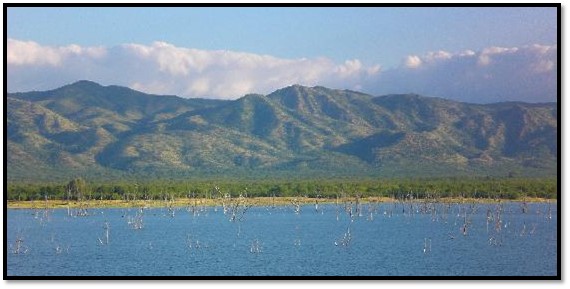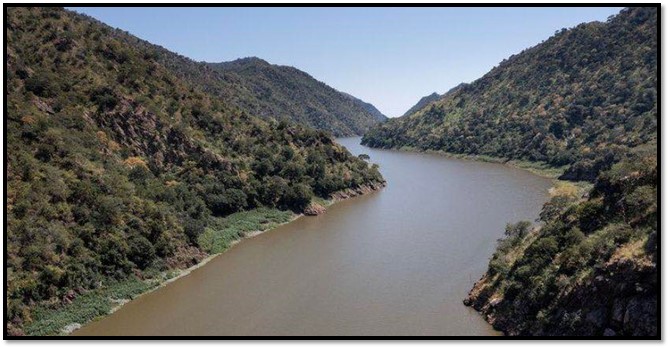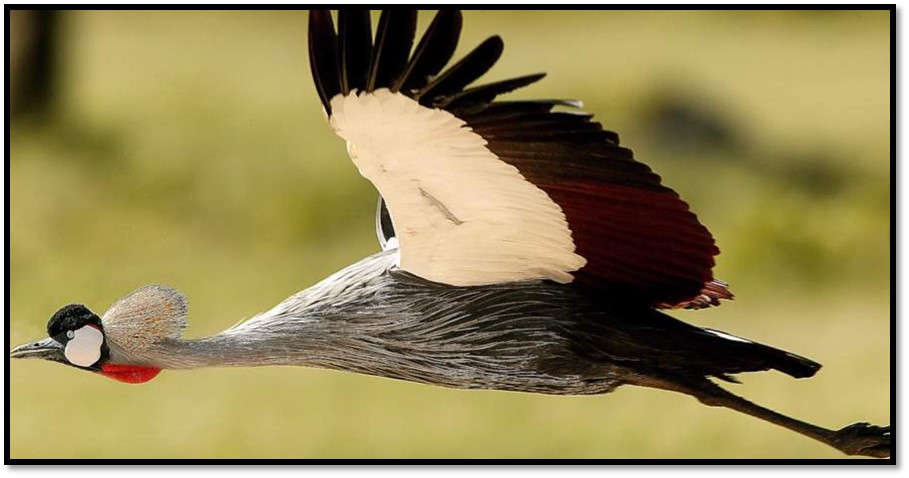Home >
Mashonaland West >
Matusadona National Park; African Parks in partnership with Zimbabwe Parks and Wildlife Management Authority (PWMA)
Matusadona National Park; African Parks in partnership with Zimbabwe Parks and Wildlife Management Authority (PWMA)
How to get here:
By road
From Karoi via the Binga road and entry to the park through its southern boundary at Chifudze substation, 68 kilometres from Tashinga (Matusadona HQ) or from Victoria Falls via Binga. Travel should be by 4x4
By air
There is an airstrip at Tashinga (Matusadona HQ) for private / charter aircraft although prior permission to land must be obtained from Tashinga.
By boat
Through Lake Kariba either from Lake Harvest or Chawara harbour (about 20 kms)
Most of the information in this article is taken from African Parks 2023 Annual Report in an effort to help maximise the attractions of the Matusadona National Park that is their first partnership in Zimbabwe.
African Parks lists 19 National Parks under its care throughout Africa in countries as widespread as Angola to Zimbabwe and including Chad, Malawi, Rwanda and South Sudan and all the others named on the map below.

African Parks 2023 Annual Report: African Parks partnerships with governments and local communities
Zimbabwe Parks and Wildlife Management Authority (PWMA) manages five million hectares of land, 13% of Zimbabwe’s land area. PWMA has a statutory duty for the protection, management, and administration of Zimbabwe’s wildlife and the Authority signed a 20-year mandate with African Parks for Matusadona National Park in 2019. Mr Fulton Mangwanya is the current Director General of the PWMA.
Matusadona National Park gets its name from the rolling Matusadona hills and covers 1,470 square kilometres. The Lake Kariba southern shoreline forms its northern boundary, the west boundary is the Ume river and the eastern boundary is the Sanyati river with its stunning steep-sided gorge. Matusadona translates as “dripping with dung!”
Much of the following is taken directly from African Parks 2023 Annual Report.
Communication is key to safeguarding Biodiversity – Matusadona National Park borders the Nyaminyami Rural District communal lands. To sustain biodiversity conservation within the broader 17,000 km² Sebungwe region, park management is supporting the development of a Land Use Plan, which is being undertaken together with the local Rural District Council, traditional leaders and communities to incorporate the needs of both people and wildlife. This participatory process included inputs from nearly 500 community members thus far.
Through these inclusive conversations meaningful and actionable solutions are being found to address land degradation, for sustainable and legal land use and to gain insight into the future needs of to HWC in the district. Park management also uses the data to identify patterns in HWC and, together communities. Once implemented, the Land Use Plan will formally recognise wildlife corridors and community wildlife conservancies in the Nyaminyami Rural District with designated zones for sustainable agricultural production, reduced human-wildlife conflict (HWC), potential community-run tourism and revenue generation, and funding opportunities for socio-economic projects.
This robust communication between park management and local communities is also significantly improving HWC reporting. Before 2019, few incidents were reported leading to the assumption that there was minimal conflict with wildlife. However, the incidence of reported HWC has risen each year since the management partnership with the Zimbabwe Government was signed, with 28 in 2020, 255 in 2021, 477 in 2022 and 247 in 2023, seven of which sadly resulted in deaths of community members. This increase in reports can partly be attributed to the improved relationship between local people and the park and the growing trust communities have in the park’s efforts to reduce conflict, but it also indicates that the issue is greater than previously believed. As a result, park capacity has been increased to respond effectively with the affected community, target specific areas of intervention to prevent conflict.

Matusadona Hills from Lake Kariba
Biodiversity Conservation – A Temminck’s ground pangolin research and monitoring project, the first in the park, was established in collaboration with the Tikki Hywood Foundation, with the aim of collecting sufficient data to learn about this little known, secretive species in the wild, while educating surrounding communities on the importance of its conservation. The movements of the nine elephant collared in 2021 have proven conclusively that seasonal dispersal still takes place through several surprisingly intact corridors.
The conservation law enforcement team grew to 90 members this year with the recruitment of a further 34 rangers (all residents of the four neighbouring chiefdoms). A new field operations manager was appointed who will begin preparations for the reintroduction of roan and black rhino. A new tented Forward Operating Base was built in the Sanyati Gorge area to provide conservation law enforcement coverage along the vulnerable eastern boundary. This has had positive results, as the 2022 and 2023 tigerfish spawn in the Sanyati Gorge went ahead unhindered by illegal nets for the first time in over 25 years.
Community development – In 2023, over 13,000 children were reached through the Reading Around the Reserve Programme in collaboration with Book Aid International, 28 disadvantaged students at risk of leaving school were granted bursaries and 113 students visited the park through the Environmental and Young Rangers programme. Over 200 students are members of seven wildlife clubs. Of Matusadona’s employees, 62% hail from the four chiefdoms with 163 of the staff complement of 164 being Zimbabweans.
A key goal for the department is to kick off the ”Fish to Fork” pilot scheme in King’s Camp, a fishing community residing within the park. The project’s objective is to see better, more equitable, returns US$567,000 generated by sustainable community f fishing groups for the local fishing community and once realised, to expand to fishing camps outside of the park.
Park revenue generation – From an average of US$80,000 per annum preceding 2019, the generation of US$351,246 in 2023 clearly shows that the park’s profile with regional and local visitors is rising. Several new campsites were opened, including one with a game-rich inland spring and a campsite with a spectacular viewpoint on the escarpment. The newly built 12-bed Jenje Bush Camp hosted its first group of guests in August to favourable reviews. Two additional game drive vehicles were purchased, increasing the tourism fleet to two pontoon boats and four vehicles for game drives and cruises, with the opportunity to capitalise on the many houseboat visitors. Four Learner Guides, qualified to take game drives and boat cruises, were recruited into the Tourism Department.
Park management and infrastructure development – The road network was expanded, and the old road map reviewed and redesigned, to include newly opened roads and new camps. The installation of a 115 kVA solar plant and inverter system ensured that the Headquarters is able to function 24/7, including the conservation office, operators’ room, administration, technical services and the clinic. Staff housing completed during the year included duplexes for middle management as well as a renovated tuck shop and recreation room for the Tashinga Staff Village, while refurbishment of a senior management house and the Umbabala housing complex is underway. The newly purchased ferry offers reliable and affordable transport between the park and the nearby town of Kariba and will help solve the park’s accessibility issues.
Achievements in 2023
- USD567,000 generated by sustainable community fishing groups
- 5,759 national visitors and 3,044 international visitors
- 13 active wildlife monitoring tags (9 elephant, 1 lion, 3 pangolin)
Objectives for 2024
- Finalise landscape-wide Land Use Plan
- Launch “Fish to Fork” pilot scheme in King’s Camp
- Complete preparations for black rhino reintroduction
- Increase the tourism portfolio

Matusadona National Park
Information for Visitors
Matusadona National Park, which was proclaimed a National Park in 1975, was originally an important stronghold for black rhino and elephants. In the recent past this remote wilderness area was the subject of extensive poaching, illegal fishing particularly in the Sanyati gorge and gold mining with most of the wildlife wiped out and the rangers outclassed due to a lack of resources and the sheer inaccessibility of much of the National Park. Many of the animals captured during Operation Noah from 1958 – 1964 were released inro the Matusadona area. With good management and enhanced resources things are now changing and thankfully the Matusadona is gradually reawakening after coming to the edge of ruin and now offers excellent game viewing and bird watching (over 240 bird species recorded) with opportunities to see the big four (elephant, lion, buffalo and leopard), plains game such as impala and kudu. The last black rhino was lost to poachers in 2019, but hopefully in the near future black rhino will be reintroduced into Matusadona.
The future for Matusadona is looking positive. An aerial survey of Matusadona in October 2020 revealed approximately 700 elephants, 470 buffalo, 4,000 impala and 1,000 hippos in the National Park. In 2021 PWMA in partnership with African Parks successfully translocated 223 zebras to Matusadona.
This partnership is proving to be the key to the rehabilitation of Matusadona with African Parks providing the funding solutions required to effectively manage the Park while ZimParks are the owners of the Park and are responsible for legislation and policy.
Chief Operations Manager at Matusadona, Michael Pelham, said their success was due to confronting the challenge of illegal fishing, gold mining and bushmeat poaching with an increased law enforcement presence, as well as community engagement and development initiatives.
Weather
Summer is hot and wet (September – March) and travel should be by 4X4. Note Game viewing roads are closed during the rainy season.
Winter and autumn (April – August) is dry and hot with cold nights
Note: no supplies (food or fuel) are available within the National Park and all visitors must be self-sufficient.

Sanyati Gorge is navigable from Lake Kariba and forms the eastern boundary of Matusadona National Park
Accommodation
The following locations cater for visitors:
Bumi Hills Safari Lodge with ten rooms sleeping a total of twenty people
Changa safari Camp with 6 standard tents which accommodate two people each and two family tents
Musango Safari Camp with six safari tents which accommodate two people each and two honeymoon suites
Rhino Safari Camp with six twin bedded rooms
Spurwing Island with six stone cabins, three chalets and eleven tents
PWMA offer the following camping sites for visitors:
Changachirere camping site caters for a maximum of ten persons within one party and has a mini-ablution block and shelter.
Sanyati Camp has six sites, each with a braai stand. There is an ablution block with hot and cold water and laundry trough.
Tashinga Camp is located on the Lake Kariba shoreline. It has an ablution block with hot and cold water, showers, toilets, wash basins and baths. Firewood and braai facilities are available.
Undeveloped Bush Camps are at:
Jenje for a maximum of 10 persons. Visitors must be self-sufficient with 4x4 vehicle for access.
Kanjedza, as at Jenje.
Exclusive Campsites are at:
- Ume close to Tashinga airstrip on the east bank of the Bumi River, 55 kilometres from Kariba by boat.
- Muuyu at Elephant Point, 44 kilometres from Kariba by boat.
- Mbalabala also on the Bumi River upstream around 300 metres beyond Ume Camp.
- Maronga close to the Chifudzi substation
- Kautsiga sited on the escarpment which is ideal for hikers and climbers.

Amazing birdlife at Matusadona National Park
References
African Parks 2023 Annual Report. https://www.africanparks.org
Zimbabwe Parks and Wildlife Management Authority (PWMA) https://www.zimparks.org.zw
Independent Newspaper. 16 Feb 2023. Govt partnership reawakens former stronghold for black rhino in Zimbabwe. https://www.independent.co.uk/voices/campaigns/giantsclub/black-rhino-zimbabwe-b2283781.html
When to visit:
Anytime
Fee:
See Zimparks website
Category:
Province:
